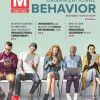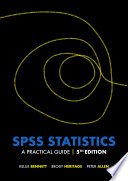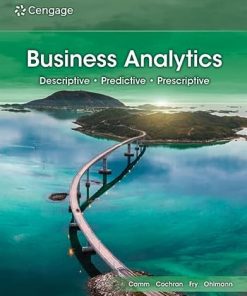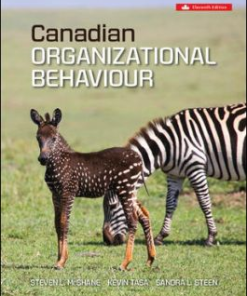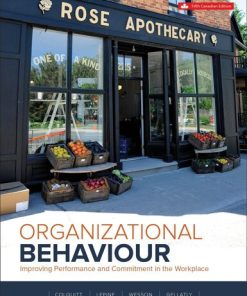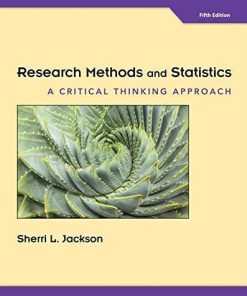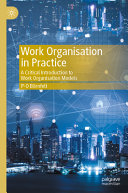(Ebook PDF) Organizational Behaviour and Work A Critical Introduction 5th Edition by Fiona Wilson 0192523104 9780192523105 full chapters
$50.00 Original price was: $50.00.$25.00Current price is: $25.00.
Organizational Behaviour and Work: A Critical Introduction 5th Edition by Fiona M. Wilson – Ebook PDF Instant Download/DeliveryISBN: 0192523104, 9780192523105
Full dowload Organizational Behaviour and Work: A Critical Introduction 5th Edition after payment.
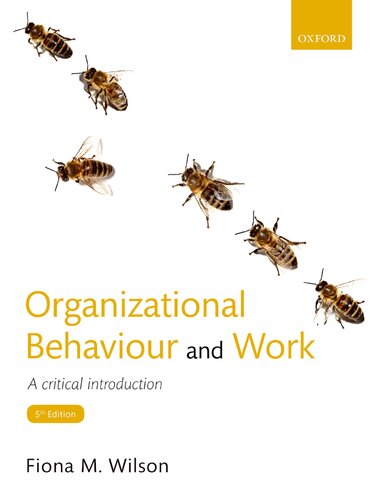
Product details:
ISBN-10 : 0192523104
ISBN-13 : 9780192523105
Author: Fiona Wilson
As the most critical yet accessible introduction to organizational behaviour and work this book will help you understand the complexities of organizational life and evaluate modern business practices. Classic organizational behaviour topics such as team-working, motivation, and change are complemented by core critical approaches such as power and control, organizational misbehaviour, and health and well-being through a clear three-part structure. Students are encouraged to look beyond a descriptive approach and truly engage with the content. Examples and ‘Stop and Think’ boxes placed throughout chapters, as well as end-of-chapter case studies with accompanying questions, provide the opportunity for this engagement and show how each chapter’s theoretical coverage applies in real-life business situations. Suggestions of films and novels which relate to the chapter topic provide further opportunities to see organizational behaviour in context and demonstrate just how prevalent its principles are in everyday life. The accessible style assumes no prior knowledge on the part of the reader, and the full range of themes and topics explored provides a rich picture of the realities of organizational behaviour and work. This book is accompanied by a selection of online resources, including: For students: Glossary Web links Critical thinking exercises For lecturers: PowerPoint slides Questions for research and discussion Additional case studies Group exercises
Organizational Behaviour and Work: A Critical Introduction 5th Table of contents:
PART 1 Approaching management critically
1 Setting the scene
Introduction
Scene setting
Globalization
Human trafficking and modern-day slavery
Corporate social responsibility and ethical behaviour
The growth of the enterprise economy
Trends in the working population
Income and social mobility
Men and women working
Men, women, and management
Mothers’ and fathers’ attitudes to work and family
Working hours
Part-time working
Homeworking
More scene-setting issues
Key Points
Case Study
Further Reading
Links to Films and Novels
Research Questions
References
2 Employees’ views of work
Introduction
Alienation
The experience of the assembly line
Making work manageable
The experience of work in the call centre
Class and orientation to work
What work means
Measuring the meaning of work
Job redesign to improve the intrinsic meaning of work
Class, gender, and the meaning of work
More ‘not so good’ and ‘unskilled’ low-paid jobs
The experience of catering work
Working-class kids, working-class jobs, and the case of care assistants
The experience of homeworking
Conclusion
Key Points
Case Study
Further Reading
Links to Films and Novels
Research Questions
References
3 Managerial views of work
Introduction
The definition of ‘management’
Research on the role of the manager
Management as a profession
Middle management
Success in management
Management and gender
The reality for the woman manager
‘Double jeopardy’: the reality for the ethnic minority woman manager
Surprises in managerial work
Standing back from managerial work
Conclusion
Key Points
Case Study
Further Reading
Links to Films and Novels
Research Questions
References
4 The rationality of management
Introduction
Early management thinkers and rationality
The rationale of scientific management and Taylorism
Henry Ford
Routinization, the detailed division of labour, and modern-day Taylorism
The rationale of the human relations movement
Job redesign
The rationale of fitting workers to jobs
Eugenics
Intelligence testing
Vocational guidance: testing, then fitting people to jobs
Conclusion
Key Points
Case Study
Further Reading
Links to Films and Novels
Research Questions
References
5 Sexuality, sex typing, and gender
Introduction
Sexuality in organizations
The sex typing of male and female jobs
The sex stereotype and emotional labour
Masculinity and managing feelings
Feeling in control
Accounting for emotion
Organizational romance
Sexual harassment
Conclusion
Key Points
Case Study
Further Reading
Links to Films and Novels
Research Questions
References
PART 2 Classic organizational behaviour and the critique
6 Motivation
Introduction
Motivation as a problem
Content theories of motivation
Process theories of motivation
Further considerations on motivation
Job satisfaction and positive outcomes for organizations
Conclusion
Key Points
Case Study
Further Reading
Links to Films and Novels
Research Questions
References
7 Leadership
Introduction
Thinking about leadership
A trait theory of leadership
Style theories and democratic leadership
Task- versus relations-oriented leadership
Consideration versus initiating structure
Transactional versus transformational leadership
Situational leadership
Emotion and leadership
Gender and leadership
Spirituality and leadership
Race and leadership
Class and leadership
Conclusion
Key Points
Case Study
Further Reading
Links to Films and Novels
Research Questions
References
8 Perception
Introduction
The study of perception
Gestalt psychology and perception
Attribution theory
Conformity
Implicit personality theory
The logical error
Stereotypes and prejudice
The distortion of perception
The halo effect
Frames and their effect on perception
Classifications and their consequences
Perceptions of employers by employees and the psychological contract
Self-perception
Further ways in which perception can be shaped
Conclusion
Key Points
Case Study
Further Reading
Links to Films and Novels
Research Questions
References
9 Personality
Introduction
Personality theory
Personality traits and tests
Intelligence testing and personality
Emotional intelligence and psychometric testing
Some difficulties with measuring and testing personality
Personality theory and problematic behaviour
Personality, integrity, and dishonesty at work
Judging competence at work
Personality and leadership
Is looking at personality traits enough?
Conclusion
Key Points
Case Study
Further Reading
Links to Films and Novels
Research Questions
References
10 Organizational learning
Introduction
The concept of organizational learning
Individual learning
Group learning
Organizational learning
Learning about language in organizations
Developing a critical consciousness
Conclusion
Key Points
Case Study
Further Reading
Links to Films and Novels
Research Questions
References
11 Culture
Introduction
The concept of culture
Understanding culture
Do the ‘best’ cultures lead to ‘best’ performance?
Critically assessing whether culture can be managed
National and organizational cultures
Problems with trying to manage culture
Describing (rather than prescribing) culture
Culture and change
Culture and gender
Culture and race
Further aspects of culture
Conclusion
Key Points
Case Study
Further Reading
Links to Films and Novels
Research Questions
References
12 Teams and teamworking
Introduction
Teamwork and teamworking
Popular views of teamworking
A historical view of teamworking
Making claims about teamworking
Teamworking and gender
Conclusion
Key Points
Case Study
Further Reading
Links to Films and Novels
Research Questions
References
13 Structure
Introduction
Weber on bureaucracy
The advantages of bureaucracy
The unintended consequences and dysfunctions of bureaucracy
Bureaucracy, emotion, and gender
Rationality and the service sector
The case of McDonald’s
McDonaldization
Organizational variation in structure
Conclusion
Key Points
Case Study
Further Reading
Links to Films and Novels
Research Questions
References
14 All change?
Introduction
New forms of organization
Change in organizations
Technology and change
The knowledge economy and knowledge workers
New organizations?
The Japanese model
Change—or continuity?
Conclusion
Key Points
Case Study
Further Reading
Links to Films and Novels
Research Questions
References
PART 3 The core of critical approaches
15 Managerial power and control
Introduction
The sources and definition of ‘power’
Managerial prerogative
Workers’ power
Managing to empower
Control and surveillance
Technology
Technology and surveillance
Business process re-engineering
Conclusion
Key Points
Case Study
Further Reading
Links to Films and Novels
Research Questions
References
16 Organizational misbehaviour
Introduction
Resistance and organizational misbehaviour
Cheating, fraud, and theft
Virtual crime
Swearing and abusive language
Swindling
Lying
Denial
Rudeness and bullying
Sabotage
Struggles relating to time
Gossip
Fun and humour
Managing organizational misbehaviour
Conclusion
Key Points
Case Study
Further Reading
Links to Films and Novels
Research Questions
References
17 Voluntary, not-for-profit, and alternative organizations
Introduction
Voluntary work
Not-for-profit
Cooperatives
The Israeli kibbutz
Yugoslav self-management
Employee involvement: profit sharing and share ownership
Conclusion
Key Points
Case Study
Further Reading
Links to Films and Novels
Research Questions
References
18 Health, well-being, emotion, and stress
Introduction
Violence and abuse
Stress
The management of emotions
Being unemployed
Being ‘on the fiddle’ or working ‘on the side’
‘Non-work’
People also search for Organizational Behaviour and Work: A Critical Introduction 5th:
introduction to work and organizational behaviour
work and organizational behaviour john bratton pdf
work psychology and organizational behaviour pdf
books on work psychology and organizational behaviour
work psychology and organizational behaviour
You may also like…
Uncategorized
Earth Sciences - Geography
Contemporary Human Geography 5th Edition James M. Rubenstein
Mathematics - Mathematical Statistics
SPSS Statistics: A Practical Guide 5th Edition Kellie 9780170471084
Mathematics - Optimization. Operations Research
Business & Economics - Management & Leadership
Business & Economics - Management & Leadership
Organizational Behaviour: Improving Performance and Commitment in the Workplace 5th Canadian Edition
Business & Economics
Work Organization in Practice: A Critical Introduction to Work Organisation Models
Business & Economics - Economics
Managerial Economics: A Problem Solving Approach 5th Edition


